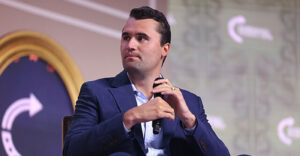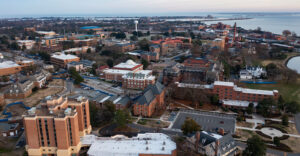At 15, Nidhi Thirthamattur is one of more than 60 co-authors on a study to assess the accuracy of measurements of liverworts, tiny plants the size of an eyelash that are sensitive to climate change.
“You don’t need a Ph.D.” to do scientific research, said Nidhi, a Nequa Valley High School student.
Advertisement
For the Field Museum’s Microplants Project, biologists, mathematicians, high schoolers, college students and thousands of museumgoers contributed data, according to the paper’s co-authors.
In the first phase of the project, kids and visitors to the Field Museum tried their hands at community science — contributing to scientific discoveries not as scientists but as regular citizens — by measuring the tiny leaves of certain plants on a touch pad.
Advertisement
Zooming in on microscopic images of liverworts on the screen, participants drew vertical and horizontal lines across the leaves, producing thousands of data points for the study’s authors to review and taking the load of data collection off scientists.
Holding up a dried plant from the Field Museum’s herbarium, Matt von Konrat — head of plant collections at the museum and one of the study’s co-authors — pointed at the plant’s label.
“We need people power to help enter this information,” von Konrat said. “It’s a whole other gig that we’ve got going on with our community science.”
The plant’s name may be unappealing, some scientists say, but cataloging liverworts is important to understanding the effects of climate change.
“They respond rapidly to changes in the environment. I often use the expression ‘like a canary in a coal mine,’” von Konrat said. “They can be used as biological or ecological indicators.”

Afternoon Briefing
Daily
Chicago Tribune editors’ top story picks, delivered to your inbox each afternoon.
Published in Research Ideas and Outcomes, a journal about scientific research, the study found that many of the measurements carried out by museumgoers turned community scientists were surprisingly accurate.
This finding has tremendous implications for scientific discoveries, according to Melanie Pivarski, lead author of the study and associate professor of mathematics at Roosevelt University.
“I mean, could you imagine being in school as a kid, and instead of just doing all the odd problems in the book, actually doing something that leads to a scientific discovery? That’s how you’re learning science,” she said. “That’s amazing. You really feel connected to everyone. And that’s the kind of power that this has — a lot of potential.”
Advertisement
Through its inclusive authorship, the study is meant to inspire engagement with science, technology, mathematics and engineering, von Konrat said.
The second phase of the project expanded participation opportunities even more as it was carried out online so community scientists from anywhere in the world could help identify branching and reproductive structures in liverworts.
“We could really scale this up,” von Konrat added, hinting at the massive behind-the-scenes repository of dried plants, fossils, bones and more that the Field Museum has for research purposes. “We work with close to 40 million objects and specimens, so we can really scale this up.”
adperez@chicagotribune.com







